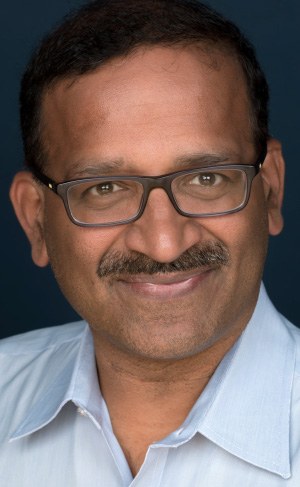

 There are only a few occasions in any of our lifetimes where what we know and have grown used to is turned on its head. We have now lost the generation that heard radio for the first time; there are only a few who can recall the first television pictures; but many, many more saw color appear on their screens for the first time. more
There are only a few occasions in any of our lifetimes where what we know and have grown used to is turned on its head. We have now lost the generation that heard radio for the first time; there are only a few who can recall the first television pictures; but many, many more saw color appear on their screens for the first time. more
 When ICANN approved the New generic Top-Level Domain (gTLD) Program in Singapore in June 2011, it pushed the activities in this space to a new level. I think we will all agree that everyone involved are very busy working on new gTLD applications and getting organized per the Applicant Guidebook requirements. This to be ready in time for the 12th of January 2012 ICANN new TLD Program launch date. However, good activities also brings along bad activities. more
When ICANN approved the New generic Top-Level Domain (gTLD) Program in Singapore in June 2011, it pushed the activities in this space to a new level. I think we will all agree that everyone involved are very busy working on new gTLD applications and getting organized per the Applicant Guidebook requirements. This to be ready in time for the 12th of January 2012 ICANN new TLD Program launch date. However, good activities also brings along bad activities. more
 The active measurements the RIPE NCC carried out on World IPv6 Day on 8 June 2011 included ICMP (Internet Control Message Protocol) and ICMP6 (ICMP for IPv6) measurements from our vantage points to selected hostnames of World IPv6 Day participants and other dual-stacked parties. We used these measurements to determine the performance of IPv4 versus IPv6 connections. more
The active measurements the RIPE NCC carried out on World IPv6 Day on 8 June 2011 included ICMP (Internet Control Message Protocol) and ICMP6 (ICMP for IPv6) measurements from our vantage points to selected hostnames of World IPv6 Day participants and other dual-stacked parties. We used these measurements to determine the performance of IPv4 versus IPv6 connections. more
 In the USA an interesting initiative has been taken by a number of leaders in the telco industry who are frustrated with the inability of the country to start building the high-speed broadband infrastructure that is needed for the development of its digital economy. While the Obama Administration has the right vision to make this happen - and the American National Broadband Plan is a good example of this - the dysfunctional political state of the country makes it impossible to establish the industry transformation needed to make this happen. more
In the USA an interesting initiative has been taken by a number of leaders in the telco industry who are frustrated with the inability of the country to start building the high-speed broadband infrastructure that is needed for the development of its digital economy. While the Obama Administration has the right vision to make this happen - and the American National Broadband Plan is a good example of this - the dysfunctional political state of the country makes it impossible to establish the industry transformation needed to make this happen. more
 The Internet is slowly beginning to adopt the new DNSSEC domain names standard, but significant challenges remain. That was the main takeaway from a four-hour workshop on the technology held during the recent ICANN 41 public meeting in Singapore, which heard from many domain registries, registrars and other infrastructure providers. more
The Internet is slowly beginning to adopt the new DNSSEC domain names standard, but significant challenges remain. That was the main takeaway from a four-hour workshop on the technology held during the recent ICANN 41 public meeting in Singapore, which heard from many domain registries, registrars and other infrastructure providers. more
 If you follow the Internet governance world like I do, you've no doubt had time to ponder the news of former ICANN Board Chair Peter Dengate Thrush's appointment as Executive Chairman of Top Level Domain Holdings Limited (TLDH). This was a seemingly fast jump from the body that coordinates the Internet (whose most recent milestone was to approve the creation of new gTLDs) to one of the key companies that stands to actively benefit from this burgeoning part of the domain name industry. Further, he's taken up a position that, according to reports, will allow him to benefit substantially as well. more
If you follow the Internet governance world like I do, you've no doubt had time to ponder the news of former ICANN Board Chair Peter Dengate Thrush's appointment as Executive Chairman of Top Level Domain Holdings Limited (TLDH). This was a seemingly fast jump from the body that coordinates the Internet (whose most recent milestone was to approve the creation of new gTLDs) to one of the key companies that stands to actively benefit from this burgeoning part of the domain name industry. Further, he's taken up a position that, according to reports, will allow him to benefit substantially as well. more
 In the US administration, we see important people like incoming Secretary of Defense Leon Panetta say at his Senate confirmation hearing that "a strong likelihood that the next Pearl Harbor" could well be a cyberattack that cripples the U.S. power grid and financial and government systems. He also said that cybersecurity will be one of the main focuses of his tenure at the Pentagon. But when you look at what is actually happening in cyber security, there is more position jockeying than there is real progress. more
In the US administration, we see important people like incoming Secretary of Defense Leon Panetta say at his Senate confirmation hearing that "a strong likelihood that the next Pearl Harbor" could well be a cyberattack that cripples the U.S. power grid and financial and government systems. He also said that cybersecurity will be one of the main focuses of his tenure at the Pentagon. But when you look at what is actually happening in cyber security, there is more position jockeying than there is real progress. more
 Today's official launch of Gig.U, a consortium of universities to facilitate next-generation community broadband opportunities, has tremendous potential. John Markoff has a story about the launch in today's New York Times. Here's why I'm hopeful for this project. more
Today's official launch of Gig.U, a consortium of universities to facilitate next-generation community broadband opportunities, has tremendous potential. John Markoff has a story about the launch in today's New York Times. Here's why I'm hopeful for this project. more
 Brand owners unfamiliar with the domain name system (DNS) are hearing that their first step in registering a top level domain (TLD) is to select a back-end TLD registry provider. The fear instilled in them is that if they don't act quickly, all available service providers will have reached their capacity. Given ICANN's tight and inflexible application submission schedule, brands don't want to be left at the starting gate. more
Brand owners unfamiliar with the domain name system (DNS) are hearing that their first step in registering a top level domain (TLD) is to select a back-end TLD registry provider. The fear instilled in them is that if they don't act quickly, all available service providers will have reached their capacity. Given ICANN's tight and inflexible application submission schedule, brands don't want to be left at the starting gate. more
 I've written recently about a general purpose method called DNS Response Policy Zones (DNS RPZ) for publishing and consuming DNS reputation data to enable a market between security companies who can do the research necessary to find out where the Internet's bad stuff is and network operators who don't want their users to be victims of that bad stuff... During an extensive walking tour of the US Capitol last week to discuss a technical whitepaper with members of both parties and both houses of the legislature, I was asked several times why the DNS RPZ technology would not work for implementing something like PROTECT-IP. more
I've written recently about a general purpose method called DNS Response Policy Zones (DNS RPZ) for publishing and consuming DNS reputation data to enable a market between security companies who can do the research necessary to find out where the Internet's bad stuff is and network operators who don't want their users to be victims of that bad stuff... During an extensive walking tour of the US Capitol last week to discuss a technical whitepaper with members of both parties and both houses of the legislature, I was asked several times why the DNS RPZ technology would not work for implementing something like PROTECT-IP. more
 DNSSEC is a hot topic. It's a technology newly unleashed on popular networking, which has led to countless articles and posts on the subject, including right here on CircleID. The way a lot of articles try to get your attention is to talk about a technology, like DNSSEC, in a way that makes the technology either seem really significant or really complicated. That is why a lot of articles about DNSSEC make it sound like something huge, complicated, and scary. But it's not. more
DNSSEC is a hot topic. It's a technology newly unleashed on popular networking, which has led to countless articles and posts on the subject, including right here on CircleID. The way a lot of articles try to get your attention is to talk about a technology, like DNSSEC, in a way that makes the technology either seem really significant or really complicated. That is why a lot of articles about DNSSEC make it sound like something huge, complicated, and scary. But it's not. more
 At eComm, I interviewed on stage Neil Davies, founder of Predictable Network Solutions. (Disclosure: they are a consulting client, we are working together to commercialise their technology.) The transcript of the interview is up on the eComm blog, titled The Internet is Not a Pipe and Bandwidth is Bad. Neil's achievement is a breakthrough advance in the use of applied mathematics to describe behaviours of statistically multiplexed networks. more
At eComm, I interviewed on stage Neil Davies, founder of Predictable Network Solutions. (Disclosure: they are a consulting client, we are working together to commercialise their technology.) The transcript of the interview is up on the eComm blog, titled The Internet is Not a Pipe and Bandwidth is Bad. Neil's achievement is a breakthrough advance in the use of applied mathematics to describe behaviours of statistically multiplexed networks. more
 I recently caught up with a former colleague Antony Van Couvering. Many here on CircleID probably know him, he's been active in the domain name business since the late 1990's. With the new Top-Level Domain (TLD) issue so white hot and with Antony's firm right in the mix, I thought it was time to get his take via an interview. If anyone has questions (or challenges perhaps?) to anything below, I'm happy to forward to Antony for a response. more
I recently caught up with a former colleague Antony Van Couvering. Many here on CircleID probably know him, he's been active in the domain name business since the late 1990's. With the new Top-Level Domain (TLD) issue so white hot and with Antony's firm right in the mix, I thought it was time to get his take via an interview. If anyone has questions (or challenges perhaps?) to anything below, I'm happy to forward to Antony for a response. more
 With 16-bit Autonomous System Numbers (ASNs), 65,536 unique numbers are possible. Just like 32-bit IP addresses, these 16-bit ASNs are becoming a scarce resource. Therefore, in 2007 the Internet Engineering Task Force (IETF) developed a new format, 32-bit ASNs (RFC 4893), which increases the supply of ASNs to four billion. more
With 16-bit Autonomous System Numbers (ASNs), 65,536 unique numbers are possible. Just like 32-bit IP addresses, these 16-bit ASNs are becoming a scarce resource. Therefore, in 2007 the Internet Engineering Task Force (IETF) developed a new format, 32-bit ASNs (RFC 4893), which increases the supply of ASNs to four billion. more
 By now, I've probably spoken with close to a hundred brand owners who are all trying to make some very important decisions about whether or not to apply for a new generic Top-Level Domain (gTLD). Everyone wants to know what "the other guy" is doing. But for the most part (with the exceptions of Canon and Hitachi), brand owners have been tight-lipped about their intentions. Even in a recent New gTLD webinar hosted by MarkMonitor (primarily attended by brand owners), when asked in an anonymous poll whether they intended to apply... more
By now, I've probably spoken with close to a hundred brand owners who are all trying to make some very important decisions about whether or not to apply for a new generic Top-Level Domain (gTLD). Everyone wants to know what "the other guy" is doing. But for the most part (with the exceptions of Canon and Hitachi), brand owners have been tight-lipped about their intentions. Even in a recent New gTLD webinar hosted by MarkMonitor (primarily attended by brand owners), when asked in an anonymous poll whether they intended to apply... more
Sponsored byVerisign

Sponsored byCSC

Sponsored byWhoisXML API

Sponsored byIPv4.Global

Sponsored byVerisign

Sponsored byDNIB.com

Sponsored byRadix
